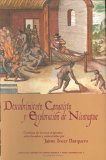Ship's Store: Books & Publications Spanish in the Americas
° 49ers 'Round The Horn ° Australia ° California (Fiction) ° Captains ° Children ° Chinese in San Francisco ° Culture of Early America ° Geneaology ° Merchants ° Passages ° Passengers ° Seaports ° San Francisco History ° Ships and Shipping ° Tales of the Sea (Fiction) ° Naval History ° Sea Politics ° Spanish in California ° Women at Sea
Books and images are also throughout the site under various topics.
 |
Descubrimiento, Conquista y Exploracion de Nicaragua
Jaime Incer Barquero |
Days of the Dons: On the Spanish and Mexican Ranchos of the San Francisco Peninsula and in the Santa Clara Valley The three population centers of California in 1835 were Los Angeles with 1,500 people, San Jose with 600, and Villa de Branciforte with 150. Once the Americans arrived, California Indians were at an even greater disadvantage. With the lure of instant wealth in front of them, the new settlers wanted little to do with those who were here before. | |
 |
Journey to the Sun: Junipero Serra's Dream and the Founding of (Spanish) California The Spanish Crown and the Catholic Church both sought expansion in Mexico—the former in search of gold, the latter seeking souls—as well as entry into the mysterious land to the north called “California.” Serra’s mission: to spread Christianity in this unknown world by building churches wherever possible and by converting the native peoples to the Word of God. It was an undertaking that seemed impossible, given the vast distances, the challenges of the unforgiving landscape, and the danger posed by resistant native tribes. Such a journey would require bottomless physical stamina, indomitable psychic strength, and, above all, the deepest faith. |
 |
Children of Coyote, Missionaries of Saint Francis: Indian-Spanish Relations in Colonial California, 1769-1850 Missions proved disastrously unhealthful and coercive, as Franciscans sought control over Indians' beliefs and instituted unfamiliar systems of labor and punishment. Even so, remnants of Indian groups still survived when Mexican officials ended Franciscan rule in the 1830s. Many regained land and found strength in ancestral cultures that predated the Spaniards' arrival. |
Piratas y Aventureros en las Costas de Nicaragua Jaime Incer Barquero |
|
|
|
 William Deverell | |
| California, its Past History, its Present Position, its Future Prospects; Containing a History of the Country from its Colonization by the Spaniards.
G. A. Fleming |
|
Horses Author Wendy Williams chronicles the 56-million-year journey of horses as she visits with experts around the world, exploring what our biological affinities and differences can tell us about the bond between horses and humans, and what our longtime companion might think and feel. Recent scientific breakthroughs regarding the social and cognitive capacities of the horse and its ability to adapt to changing ecosystems indicate that this animal is a major evolutionary triumph. Williams charts the course that leads to our modern Equus-from the protohorse to the Dutch Warmbloods, Thoroughbreds, and cow ponies of the twenty-first century. She observes magnificent ancient cave art in France and Spain that signals a deep respect and admiration for horses well before they were domesticated; visits the mountains of Wyoming with experts in equine behavior to understand the dynamics of free-roaming mustangs; witnesses the fluid gracefulness of the famous Lipizzans of Vienna; contemplates what life is like for the sure-footed, mustachioed Garrano horses who thrive on the rugged terrain of Galicia; meets a family devoted to rehabilitating abandoned mustangs on their New Hampshire farm; celebrates the Takhi horses of Mongolia; and more. She blends profound scientific insights with remarkable stories to create a unique biography of the horse as a sentient being with a fascinating past and a finely nuanced mind.
The Horse: The Epic History of Our Noble Companion  Fifteen horses were brought by the Cortez expedition and were imported by Spanish homesteaders to Mexico and New Mexico. The re-introduced species made their way north through the western U.S. west of the Rocky Mountains to the coast, following the expansion of the Mexican/Spanish. Although greatly valued by their owners, they occasionally escaped, fueling Navajo raiders as early as 1606. Trading and warring among Natives resulted in a rapid spread pf horses through the continent.  Within 150 years of the first colonizers, herds of millions -- mostly Spanish Andaluz Mustangs — were roaming the plains. The following centuries saw other European settlers bringing their own horses from the east. British and French colonizers introduced Thoroughbreds, where as Russians are thought to have brought horses to the continent from the Northwest, but this is unestablished. Most non-Spanish stock blended together, becaming "North American breeds" through cross-breeding. In the 1800s in the U.S., millions of horses were collected for riding and other use by ranchers and the military. By the late 1800s millions of wild horses were killed due to increasing land conflicts with ranchers. |
|

 Copyright © 1998-2017.
Copyright © 1998-2017.